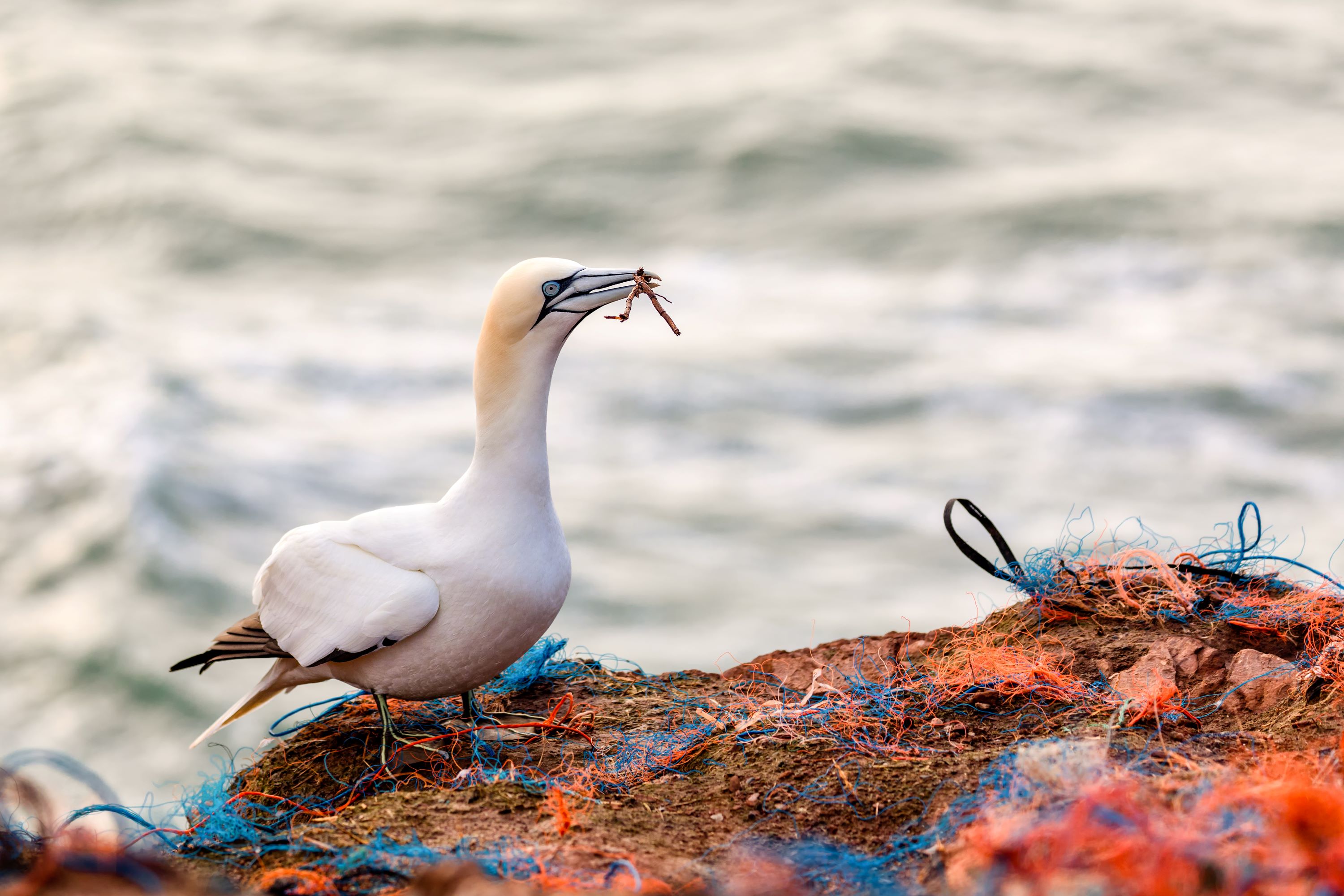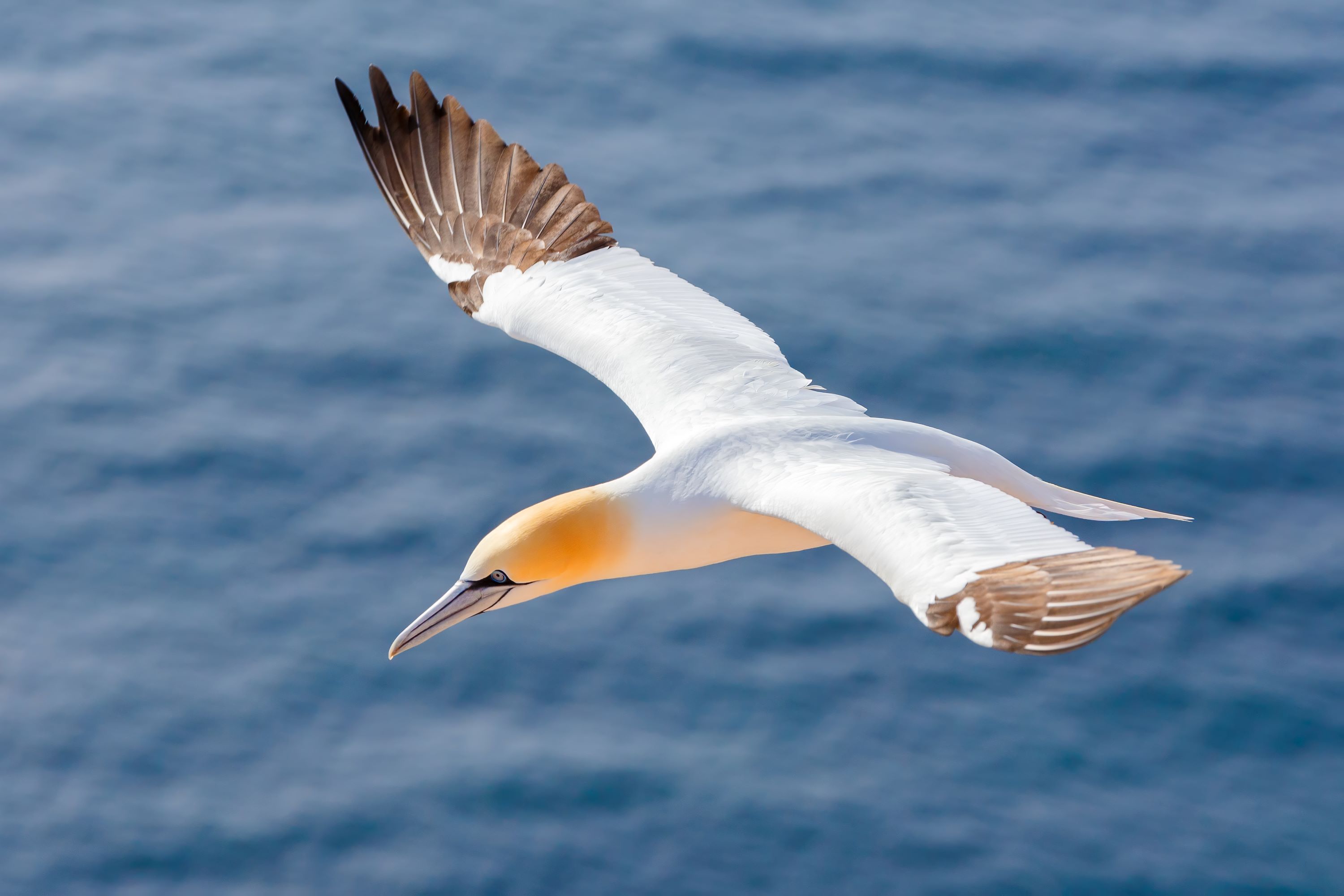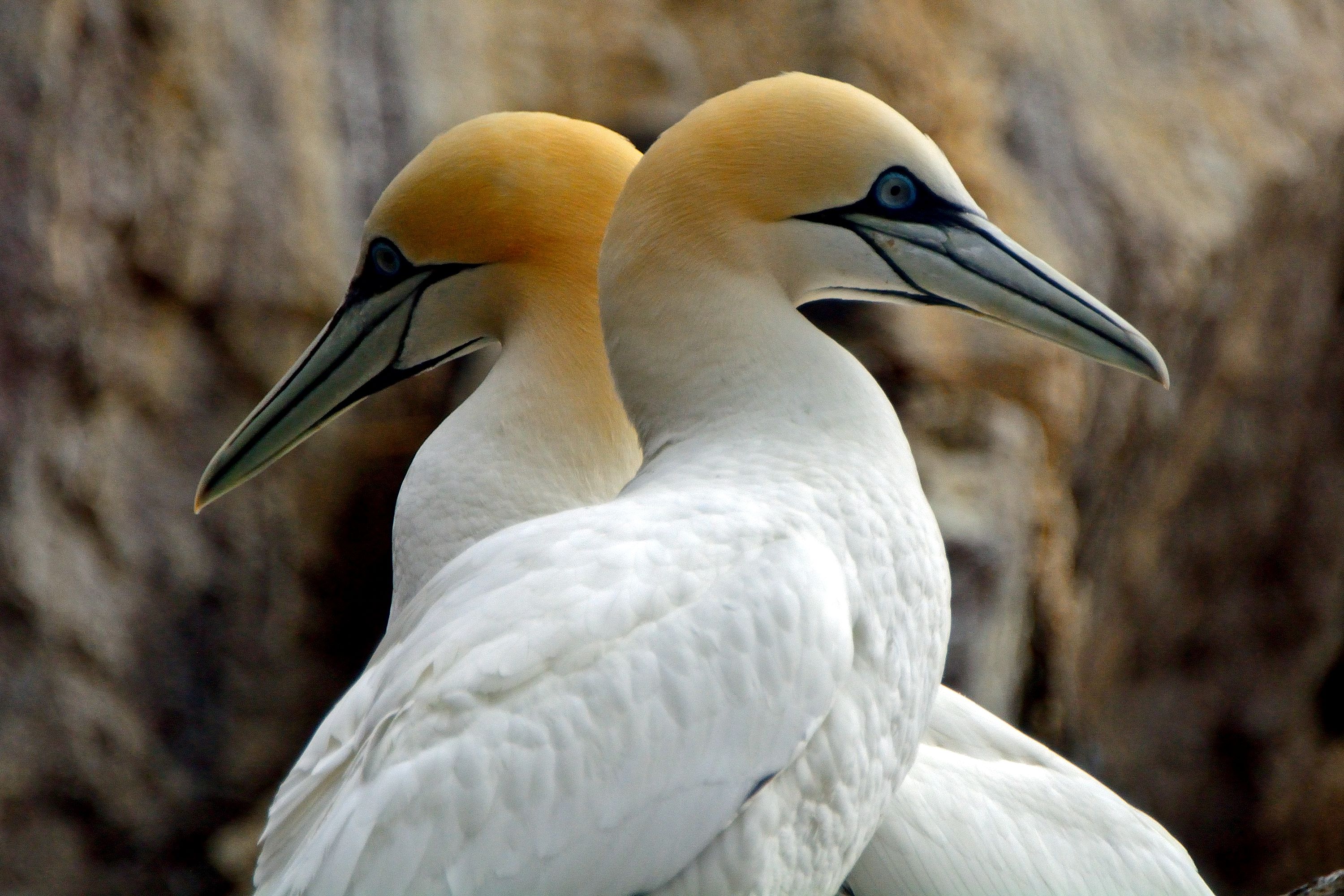
Northern Gannet: The Graceful Diver, Morus bassanus
Introduction to the Northern Gannet
The Northern Gannet, known scientifically as Morus bassanus, is a magnificent seabird that is a member of the Sulidae family. Renowned for its exceptional diving ability and striking appearance, this bird is the largest seabird in the North Atlantic, embodying a fascinating blend of aerial grace and aquatic agility. A symbol of the wild, open oceans, the Northern Gannet has captured the attention of bird enthusiasts and conservationists alike.
Physical Description
Adult Northern Gannets are impressive in size, with a wingspan reaching up to 2 meters and a body length of about 90-100 cm. They are predominantly white with black-tipped wings and a distinctive yellowish head. Their long, slender necks and pointed beaks are perfectly adapted for plunge-diving, a skill they are masterful at. The gannet’s eyes are positioned forward on its face, providing excellent binocular vision essential for hunting.
Habitat and Range
Northern Gannets are primarily found in the North Atlantic Ocean. They breed on steep cliff faces and rocky islands off the coasts of western Europe, from Iceland and Norway south to the Iberian Peninsula, and in eastern North America from the Gulf of St. Lawrence to New England. Outside the breeding season, they roam widely across the North Atlantic, as far south as the Gulf of Mexico and the western Mediterranean.

Feeding Habits and Diet
The diet of the Northern Gannet is mainly composed of fish, which they hunt using their renowned high-speed dives. They can plunge from heights of 30 meters, entering the water at speeds up to 100 km/h to catch fish such as herring, mackerel, and sand eels. Their acute eyesight allows them to spot fish from high in the air before diving.
Breeding Behavior and Nesting
Northern Gannets are colonial nesters, gathering in large numbers on cliffs and islands. Their breeding sites, known as gannetries, are often used for many generations. The birds are monogamous, typically forming long-term pair bonds. They construct their nests from seaweed, grass, and other materials, cemented together with their own droppings.
Courtship and Mating Rituals
The courtship rituals of Northern Gannets are elaborate and involve a series of synchronized movements, such as mutual preening, bill-fencing, and head-bobbing. These displays reinforce pair bonds and are a crucial part of their breeding cycle.

Egg Laying and Incubation
The female typically lays one large, pale blue egg, which both parents incubate for about six weeks. Uniquely, they do not have a brood patch – a featherless area common in other birds for warming eggs – and instead use their webbed feet to keep the egg warm.
Chick Rearing and Fledging
After hatching, the chick is fed by both parents through regurgitation. The chick grows rapidly, and within three months, it is ready to leave the nest. The fledging process is dramatic: the young bird must make a perilous leap from the cliff to begin its life at sea.
Conservation Status and Threats
The Northern Gannet is currently not considered endangered, but it faces several threats, including oil spills, overfishing, and plastic pollution. The species is also vulnerable to changes in fish populations and climate change, which can affect food availability.
Conclusion: The Splendid Northern Gannet
In conclusion, the Northern Gannet (Morus bassanus) is a symbol of the rugged, unbridled beauty of the ocean. Its life, marked by impressive diving skills, intricate social behaviors, and dedicated parental care, underscores the complexity and wonder of avian life. While not native to inland areas like Utah, the story of the Northern Gannet inspires awe and a deeper appreciation for the diverse and dynamic world of seabirds, highlighting the importance of ocean conservation and the protection of marine biodiversity.